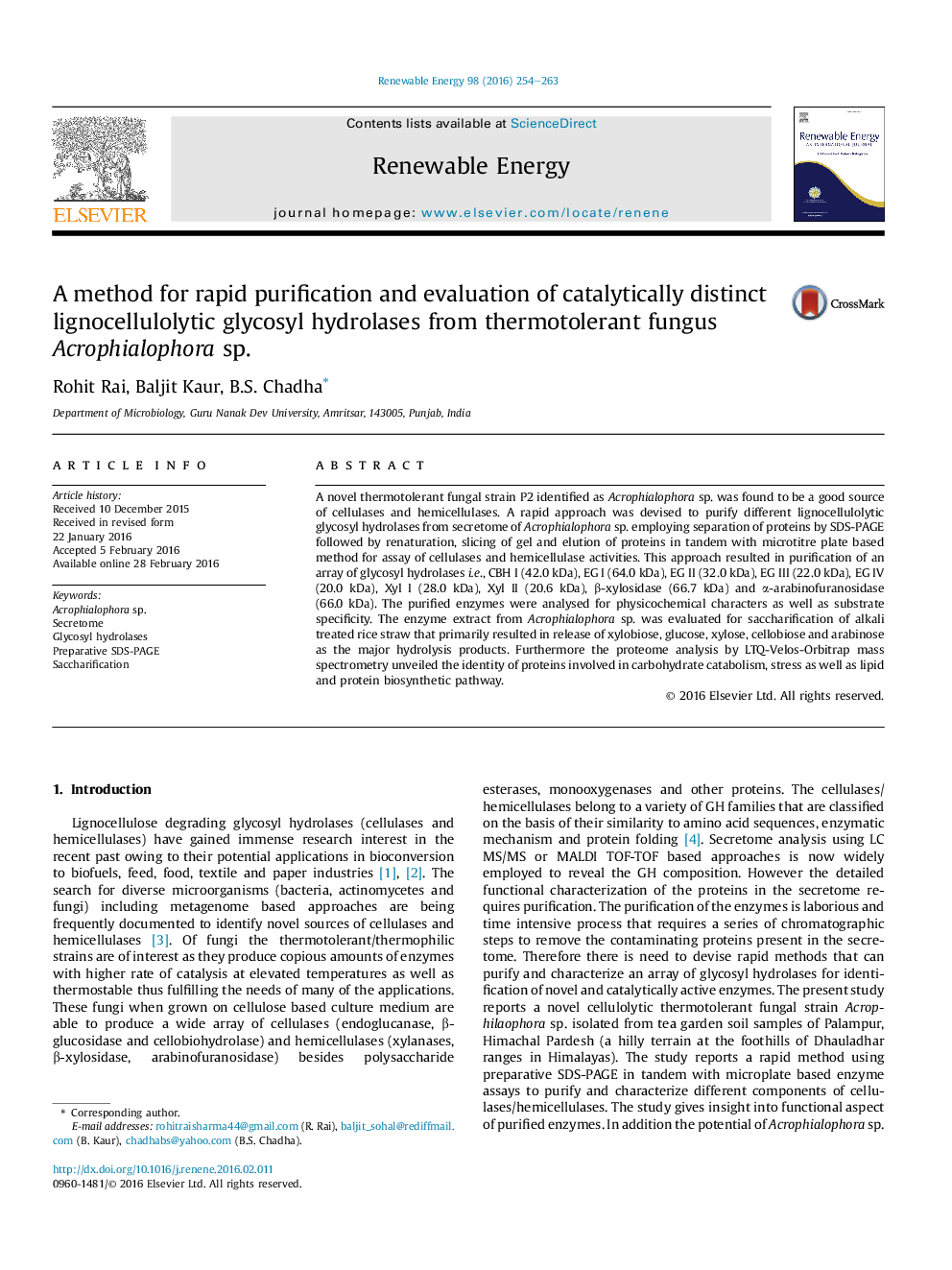| Article ID | Journal | Published Year | Pages | File Type |
|---|---|---|---|---|
| 299669 | Renewable Energy | 2016 | 10 Pages |
•Acrophialophora sp. is a novel source of versatile glycosyl hydrolases.•Rapid purification and characterization of nine distinct glycosyl hydrolases.•Efficient in hydrolyzing alkali treated rice straw into xylobiose and other sugars.•The LC MS identified constituent proteins in secretome.
A novel thermotolerant fungal strain P2 identified as Acrophialophora sp. was found to be a good source of cellulases and hemicellulases. A rapid approach was devised to purify different lignocellulolytic glycosyl hydrolases from secretome of Acrophialophora sp. employing separation of proteins by SDS-PAGE followed by renaturation, slicing of gel and elution of proteins in tandem with microtitre plate based method for assay of cellulases and hemicellulase activities. This approach resulted in purification of an array of glycosyl hydrolases i.e., CBH I (42.0 kDa), EG I (64.0 kDa), EG II (32.0 kDa), EG III (22.0 kDa), EG IV (20.0 kDa), Xyl I (28.0 kDa), Xyl II (20.6 kDa), β-xylosidase (66.7 kDa) and α-arabinofuranosidase (66.0 kDa). The purified enzymes were analysed for physicochemical characters as well as substrate specificity. The enzyme extract from Acrophialophora sp. was evaluated for saccharification of alkali treated rice straw that primarily resulted in release of xylobiose, glucose, xylose, cellobiose and arabinose as the major hydrolysis products. Furthermore the proteome analysis by LTQ-Velos-Orbitrap mass spectrometry unveiled the identity of proteins involved in carbohydrate catabolism, stress as well as lipid and protein biosynthetic pathway.
